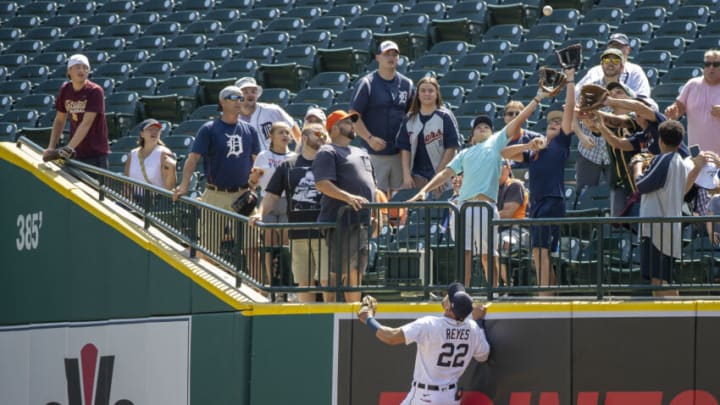
1. Addressing centerfield
I still have memories of Jack Cust and JD Martinez helping baseballs disappear in the shrubs beyond centerfield. In JD’s case, he would sometimes even clear them:
Michigan is well-regarded for its nature; simply bringing in the shrubbery in center would offer continuity and an opportunity for some fun artistic designs while continuing to pay homage to the greenery across the state. The Houston Astros have shrubs that effectively serve as a batter’s eye, but with the Tigers’ vines, they wouldn’t need anything so extravagant.
Another possibility would be to create their own ‘Monument Park’ in center; a platform that would essentially link the statues that already exist in the left-center and right-center fields. Space is getting scarce for statues, and while the club doesn’t intend on retiring more numbers in the immediate future, there is a possibility that Justin Verlander, Miguel Cabrera, and Lou Whittaker will all need their real estate within the next 10 years.
I once felt having some seating there would offer a nice vantage to the game. However, hitters are becoming increasingly accustomed to their batter’s eye to help pick up the baseball out of pitchers’ hands. Creating seating there may only replace one complaint with another from hitters.
Detroit Tigers shortstop Zack Short mentioned on his podcast “The Compound” that the players have heard rumors about centerfield coming in around 390 or 400 feet, although he is not sure if it is true (December 14th episode around the 23-minute mark).
Regardless, centerfield doesn’t have to be anything fancy. Most teams, even those with modern ballparks, have minimal creativity with the space. A shorter fence would bring more home runs; thus creating a more entertaining product while also fostering a more level playing field for hitters.
